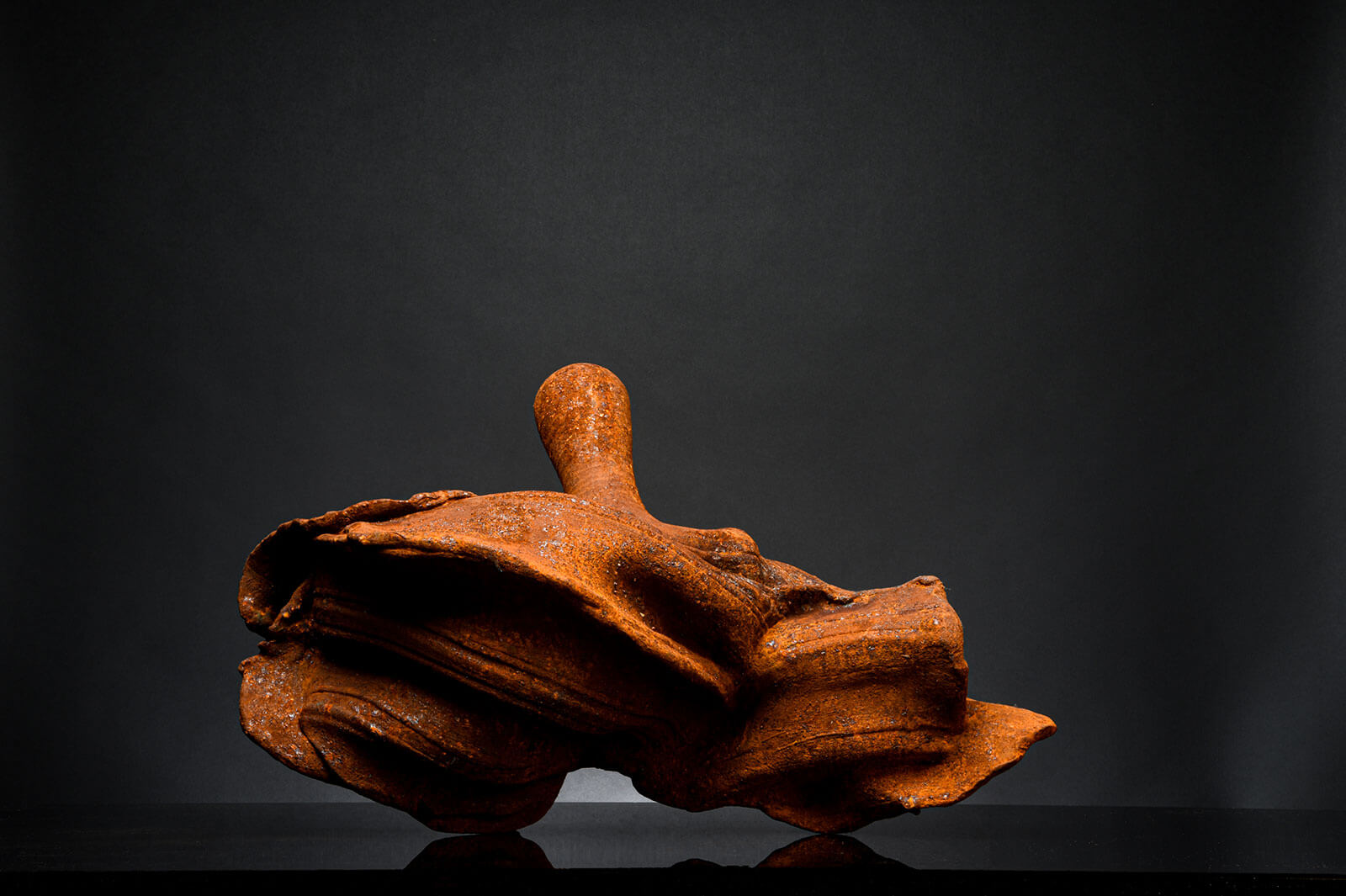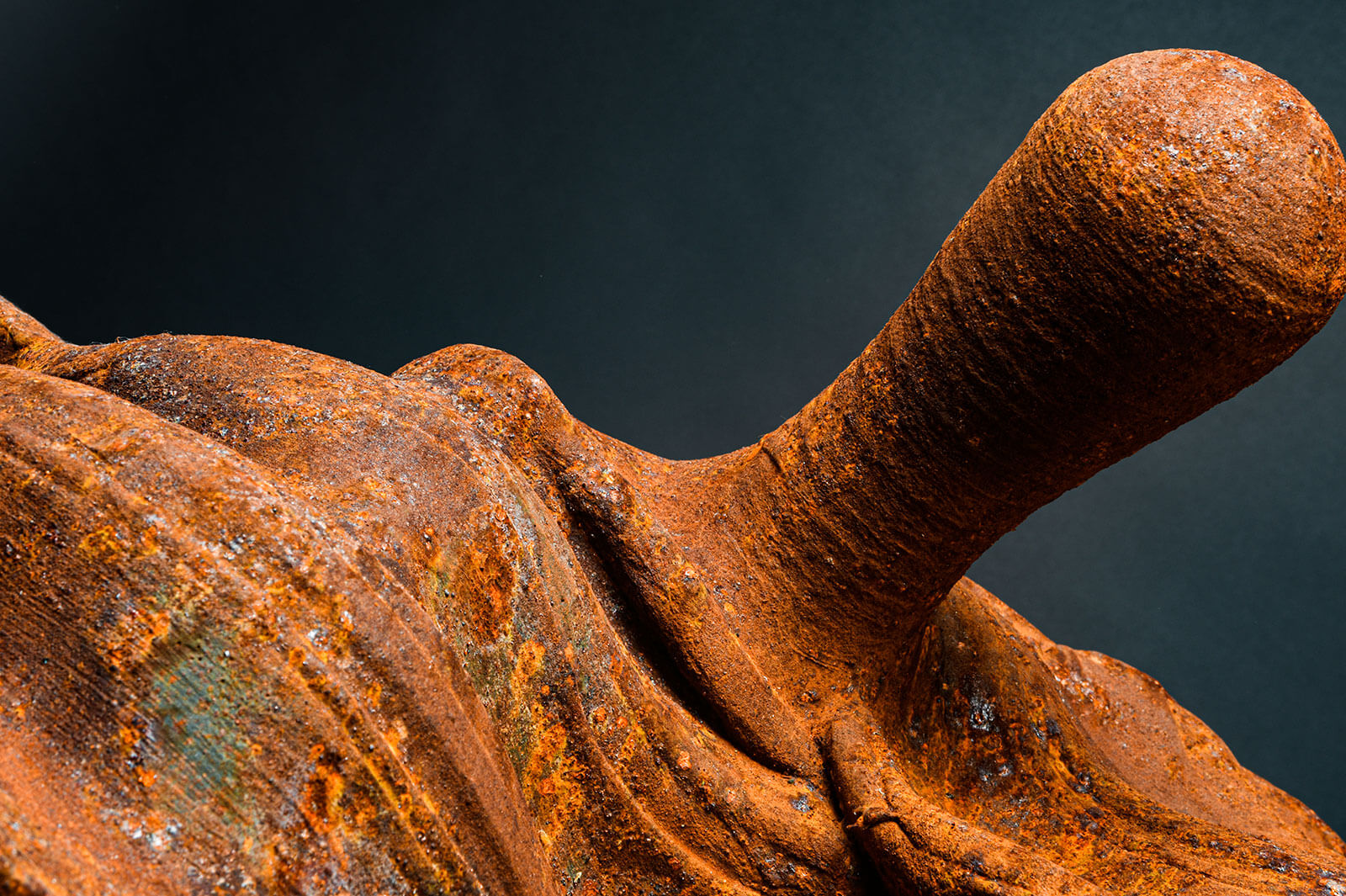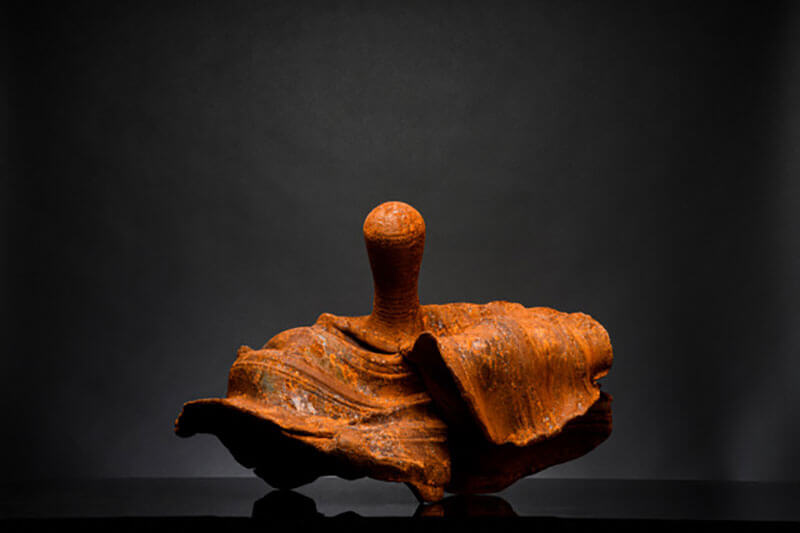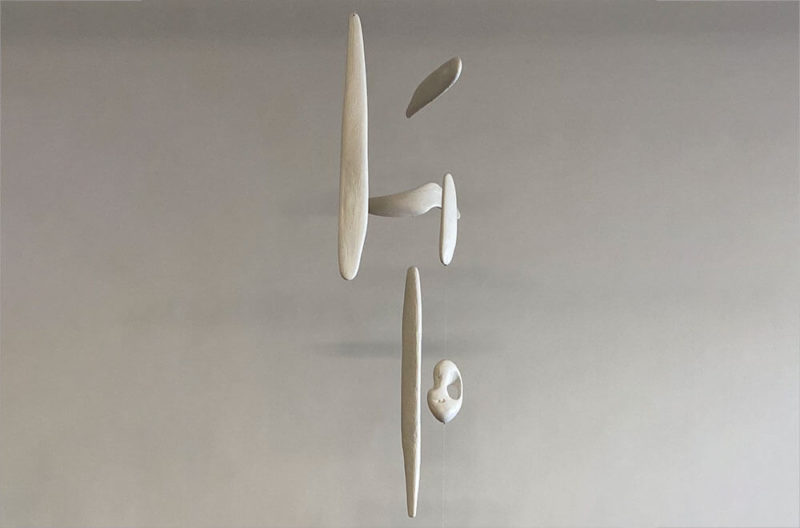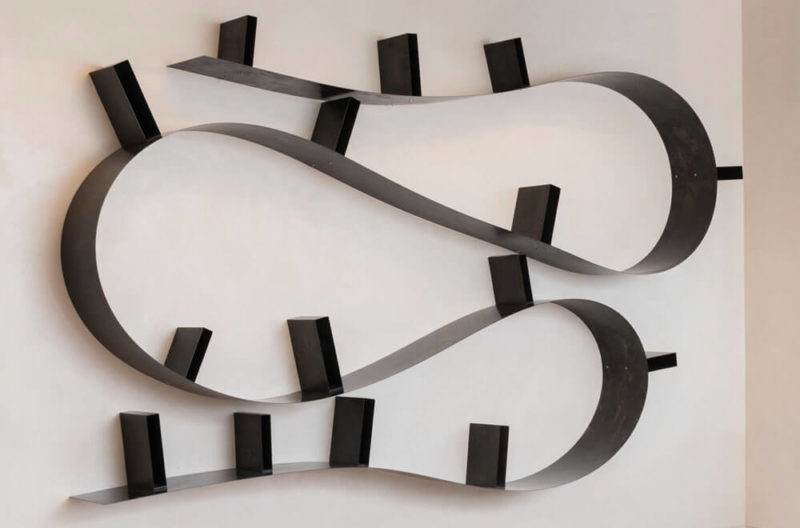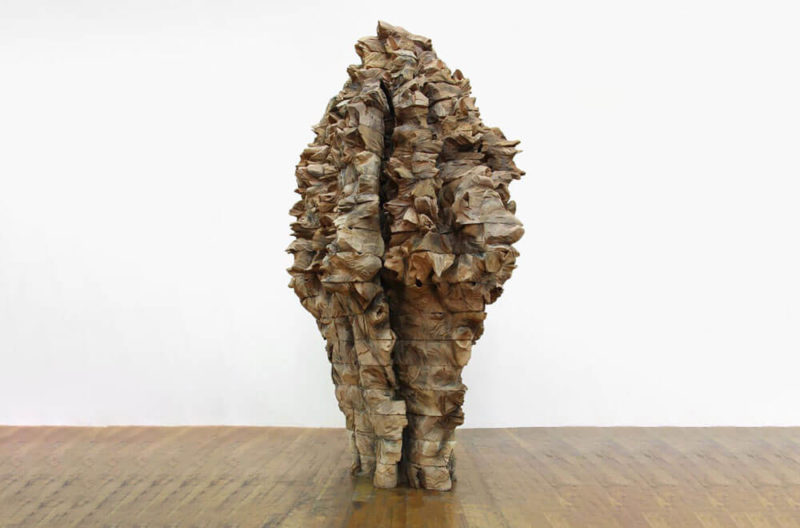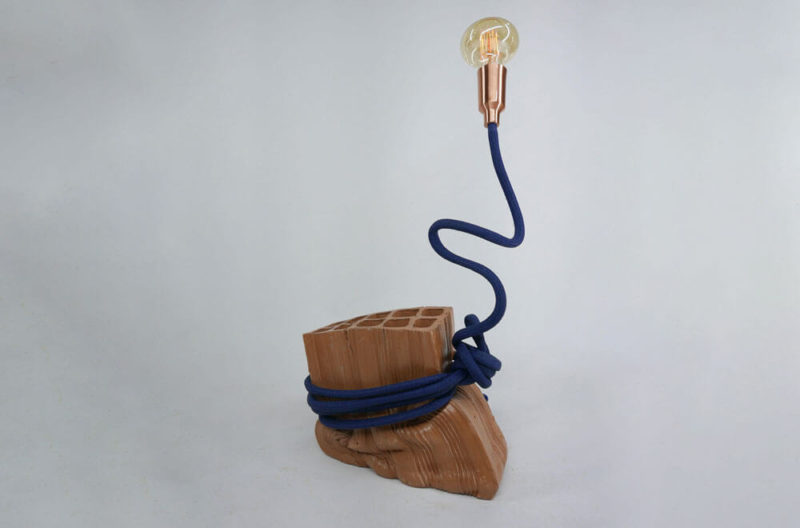‘Attenuated By Fetters’, 2020
James Evans
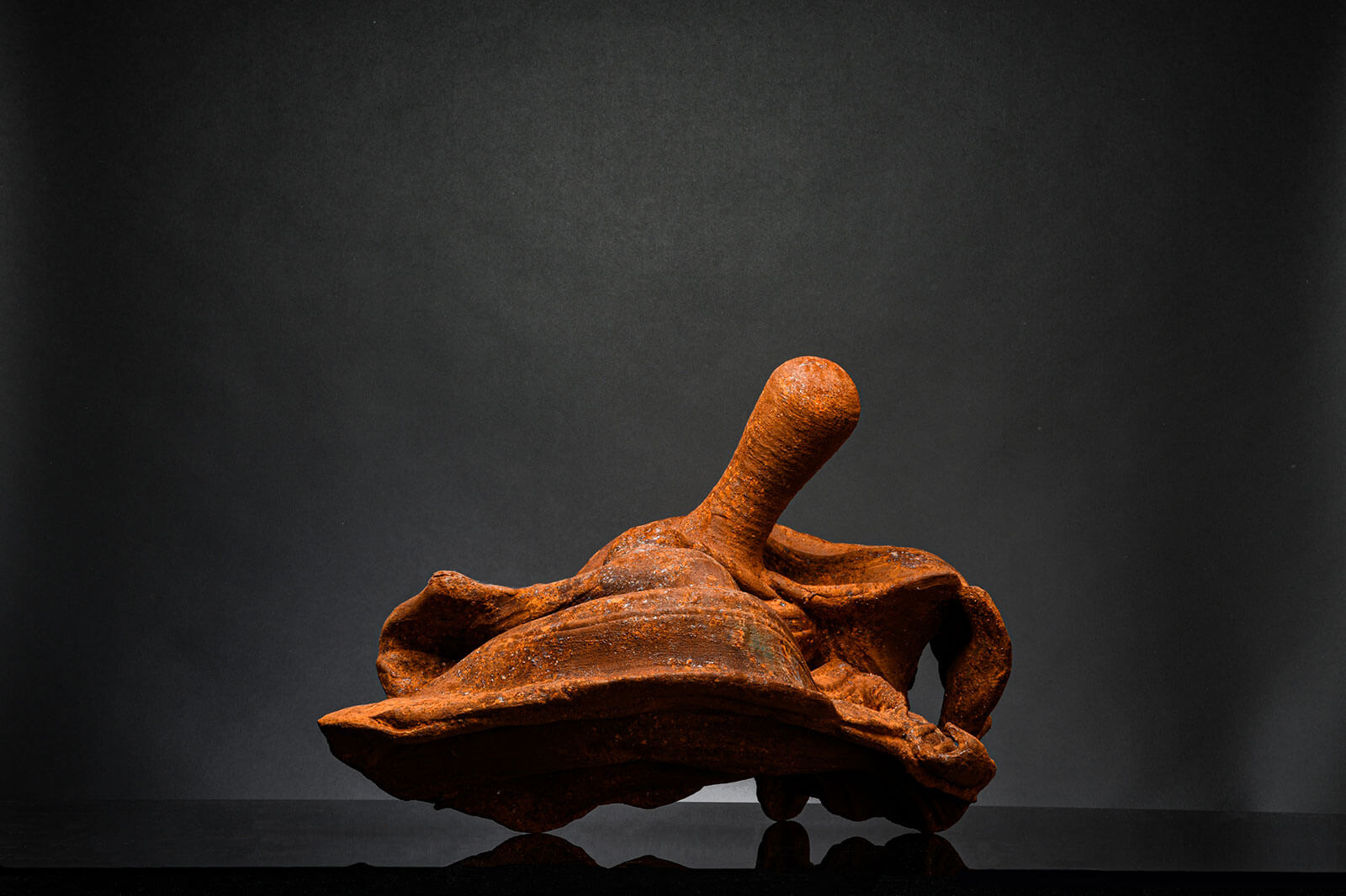
James Evans, ‘Attenuated By Fetters’, 2020
COURTESY: Marsden Woo
THIS MYSTERIOUS, PURPOSEFUL, compelling, whirling dervish of an object, is the creation of ceramic artist James Evans. It forms part of his latest exhibition, Precious Details of Decay, which opened online on 1st April. It is made from ceramic, that homely and soft material, but with a smooth crust of rusting iron that is hard and metallic. It alludes to functional objects, but itself has no function – as if it had been crushed, buried and dug up, with parts possibly eroded or lost. And yet it seems proud of that red skin, as if it were a creature, staggering but surviving, full of energy. Is it animal, vegetable or mineral? Manmade, or the result of millennia of geological processes? Is the title an allusion to the spiritual discipline of Buddhism, the fetters referring to the worldly concerns that tie the soul down, or does it refer more simply to the hardware of a jail? ‘Attenuated by Fetters’ is a quintessentially ambiguous object, yet thrilling in its liveliness.
Evans first studied ceramics at the Central School of Art and Design in London during the 1980s. There he was taught by a distinguished trio – Rob Kessler, Richard Slee and Gillian Lowndes – who persuaded him that his destiny was not in St. Ives, making functional pottery, but in a more sculptural direction. On graduation he won a full scholarship to study at the University of Colorado Boulder, USA. There he worked under the guidance of Betty Woodman, Scott Chamberlin and Tom Potter – adventurous, experimental sculptural potters – whilst exploring the foothills of the rockies.
Since then, he has continued to work in an exploratory and experimental way. Architecture and the human body are equally sources of inspiration. He recalls working in the V&A and being inspired by the subtle curves of Antonio Canova’s marble sculpture ‘The Three Graces’: “This hard solid material was softened with the tiniest curve or fold transferring the mass this way and that. It is that element of contrast that I wish to capture and then place it in a form that has no reference to the body. This where the architectural portion comes in. Lumps of solid mass broken off, a detail eroded by time found in an archeological dig.”
Evans says: “The present work is process-led. I have found a new technique of moulding, texturing the surface and then distortion, combining different ways of working with the material.” Whilst led by the material, Evans is after a certain fluidity, “I am interested in how the line flows between the slabs, so that it is not disjointed. I wanted it to curve naturally, to be inviting, so you want to follow it with your hand.” He also wanted it to dance on points, so that it looks lighter that it might be. Ultimately, for Evans, the object’s purpose is to evoke emotions and memories, but in a way that is not specific. The bulbous protrusion, for instance, recalls both the bollards on the docks on the Suffolk Coast, where Evans grew up, and the dummy of his first child, but it can find an answering memory in any viewer.
-
James Evans, ‘Attenuated By Fetters’, 2020
COURTESY: Marsden Woo
-
James Evans, ‘Attenuated By Fetters’, 2020 (detail)
COURTESY: Marsden Woo
-
James Evans, ‘Attenuated By Fetters’, 2020
COURTESY: Marsden Woo
James Evan’s Precious Details of Decay can be seen at Marsden Woo’s virtual showroom from 1st April.
